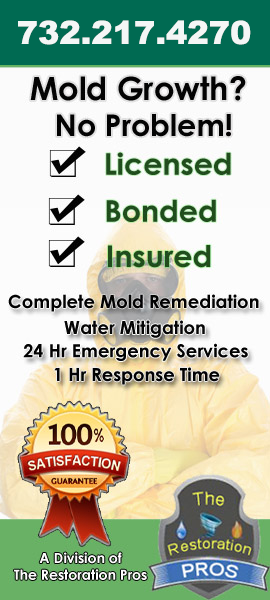Understanding Mold in the Home: Why It Grows and How to Handle It
Nobody wants to find mold in their apartment or home, but it has a pesky habit of popping up suddenly and spreading quickly. Tackling mold can be a tedious and sometimes expensive task, hiring a professional mold remediation team can help to ensure its safely removed, but it helps to understand what caused it in the first place.
What Causes Mold in Apartments and Homes?
In almost all cases, dampness causes mold. It can come from water damage, condensation, or humidity, but the core issue remains the same. When materials get damp and unable properly dry out, the spores fester and multiply- eventually taking over the area completely.
It can begin on the surface or from the inside, depending on the cause of the dampness. The deeper the mold spores go, the more difficult they are to get rid of. Although simple DIY cleaning techniques can manage most surface mold, more advanced colonies may require professional assistance.
Please also bear in mind that some species of mold are dangerous and pose health risks. Toxic black mold can cause respiratory issues if inhaled. Disturbing suspicious spores is not the answer- instead, call in a mold removal service or remediator.
Top Causes of Mold in the Home
Here are a few common household issues that can spur an unwanted visit from this fuzzy intruder.
- Leaking pipes and appliances
Washing machines, dishwashers, and under-sink plumbing can begin to leak water over time. If you don’t notice it soon enough or fail to react quickly, moldy spores may appear. Because the leaks tend to happen in non-ventilated areas with no natural fresh air, a mold problem can spread quickly.
- Condensation around air vents and air conditioning units
When air regulation systems don’t run as they should, a condensation build-up can appear in and around the vents. This dampness creates a perfect breeding ground for mold spores. Mold in vents can be dangerous as the system could be spreading it into the air. Get it checked immediately if you have suspicions.
- Persistent Humidity
Living in a humid area means having to take extra care with air circulation and ventilation in the home. Attics are particularly prone to humidity-born mold because they tend to get forgotten.
Homes near the ocean or rivers are even more at risk because of the high water content in the air. It is natural for mold to appear in these circumstances, so homeowners must be extra vigilant to tackle issues as soon as possible.
Scrubbing the walls with a DIY anti-mold solution with a firm brush can keep growths at bay.
- Unattended dampness
If anything is left damp around the house for too long, it can lead to mold. Clothing, upholstery, carpets, floor boards, drywall, and more can provide havens for spores to multiply. Whether your home is damp because of storm or flood damage, a leaking roof, burst pipes, or anything else: do not leave affected areas to fix themselves!
Whatever can go outside should be moved and left in a fresh, airyated space. If it can’t be moved (walls, for example), attempt to dry it out with fans and dehumidifies. Call in a professional mold inspector to assess the damage and risks.
Conclusion
Mold is natural and appears in most homes sooner or later, but it shouldn’t be left to get out of hand. Looking out for these common causes can help you stay ahead of the spores and keep your home happy and healthy.





